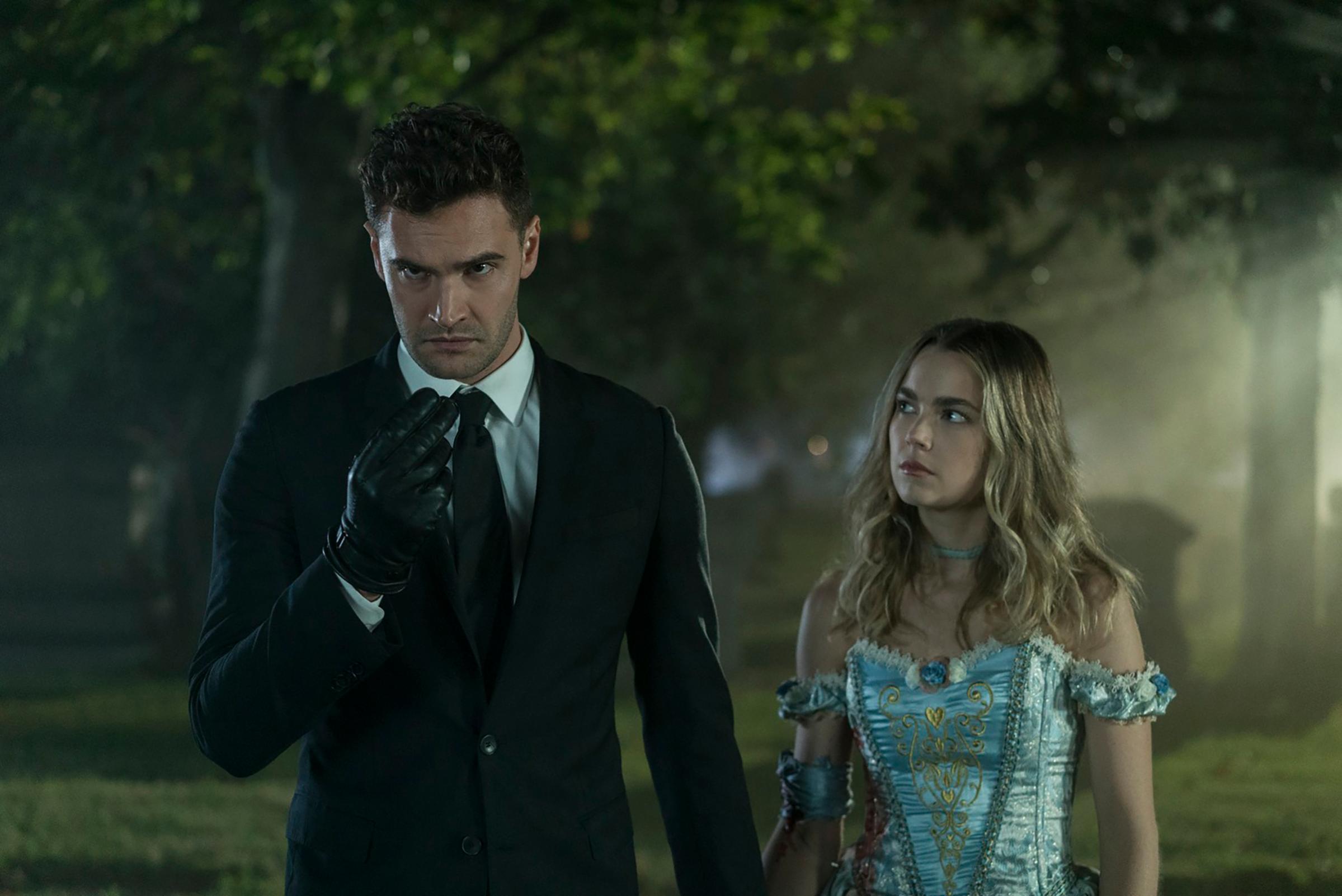
As drugstore candy displays have been reminding us since August, Halloween is fast approaching–and, as always, TV is on it. Family sitcoms are going wild with topical costumes. The Food Network has draped itself in spun-sugar cobwebs. Freeform is wall-to-wall Hocus Pocus. But you needn’t be privy to Netflix’s closely guarded audience data to understand why the holiday has a unique appeal for streaming platforms: suspenseful shows are ideal for binge watching, and the cost-effective horror genre is a safe investment for sites stockpiling original content.
One reason horror can be so cheap is that it doesn’t have to be good to be entertaining. In lieu of adequate writing, acting and production values, gory set pieces will usually do. Unfortunately, Hulu is banking on that low barrier to entry this year, with schlocky Halloween titles that aren’t even fun. On Oct. 5 it launched Into the Dark, a monthly anthology, courtesy of the horror-hit factory Blumhouse, with feature-length installments tied to holidays. The series naturally begins with a Halloween episode: “The Body.” The bloody tale of a hit man at a costume party is based on a short–and it shows in a plot stretched too thin over 90 minutes and stock horror characters whose vapidity defies belief. (The listless performances don’t help.) Equally dull is Hulu’s half-hour Pretty Little Liars knockoff, Light as a Feather, about four high school friends and the creepy new girl who knows how they’ll die.
Netflix may be the platform taking fullest advantage of the holiday. As is its custom, the streaming monolith has churned out seasonal content for every type of viewer–true-crime addicts (Making a Murderer), kids (Creeped Out, Super Monsters), home cooks (The Curious Creations of Christine McConnell)–plus a mess of original fright flicks. But it has also invested in a pair of quality dramas: The Haunting of Hill House and Chilling Adventures of Sabrina.

Debuting on Oct. 12, the 10-episode Hill House, from horror master Mike Flanagan (Oculus), reframes the Shirley Jackson novel as the story of five adult siblings whose fates have been shaped by their family’s traumatic stay in the haunted home when they were kids. Between effective jump-scares, a cast led by the great TV actors Michiel Huisman (Game of Thrones) and Elizabeth Reaser (True Detective) breathes life into an allegory for collective mourning.
But it’s Sabrina, a dark coming-of-age drama from Riverdale‘s corner of the Archie Comics universe that drops on Oct. 26, that’s the best show of the bunch. Forget Melissa Joan Hart’s saccharine teen witch; as played by the steely Kiernan Shipka (Mad Men‘s Sally Draper), Sabrina Spellman could be Buffy the vampire slayer’s sardonic, supernaturally powerful cousin. This Sabrina has substance, too: pressured by her aunts to sign over her soul to Satan, the half-witch heroine must consider her own spiritual beliefs. Allusions to infamous heretics like Aleister Crowley and Faust only lightly obscure a portrait of a young woman wrestling with universal questions of faith.

Horror merely needs to exist to draw a Halloween crowd, so it’s easy to imagine plenty of viewers pressing play on both Hulu and Netflix before October is over. The trouble is, the streaming business thrives not on ratings for individual episodes but on attracting and retaining subscribers. Among this year’s offerings, only Sabrina and Hill House seem capable of luring in new viewers–even after the candy displays give way to shelves sparkling with tinsel.
More Must-Reads from TIME
- Cybersecurity Experts Are Sounding the Alarm on DOGE
- Meet the 2025 Women of the Year
- The Harsh Truth About Disability Inclusion
- Why Do More Young Adults Have Cancer?
- Colman Domingo Leads With Radical Love
- How to Get Better at Doing Things Alone
- Michelle Zauner Stares Down the Darkness
Contact us at letters@time.com